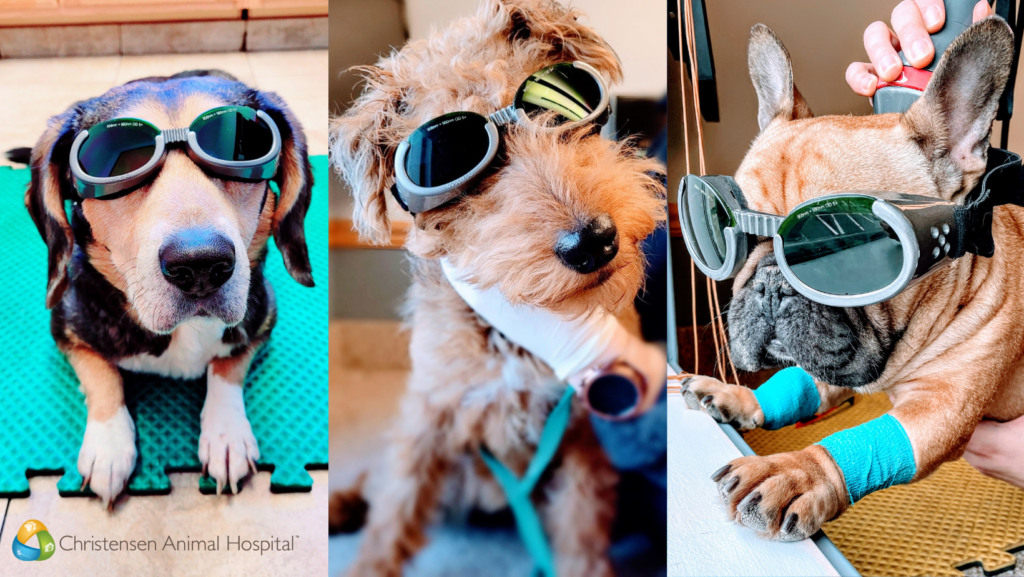New Approaches to Pain Management
Has your arthritic pet been recommended laser therapy? Perhaps you’ve seen “post-operative laser therapy” on a recent medical care plan. At Christensen, providing a comfortable and pain-free life for your pets is our utmost concern, and laser therapy helps us to achieve this.
Laser therapy, or photobiomodulation, offers effective pain relief without the use of pharmaceuticals. The laser is a directed beam of light between 400-1100nm. It works on a cellular level, specifically within the mitochondria of the cell (the powerhouse of the cell, if you recall from your high school biology class) to start mechanisms that increase cell growth and motility, active pro-survival pathways, and increase vasodilation. When we apply this to damaged tissue, it helps the area to heal and regenerate more rapidly while also decreasing inflammation and the accompanying pain.
If the above explanation left you more confused than anything, not to worry, laser therapy is a drug-free (and therefore, side-effect-free) way to decrease pain and speed along the healing process. This can be used in many settings at the animal hospital. For example, laser therapy can be used on surgical incisions, after dental extractions, on wounds, muscle sprains, and fractures. We can even use it for skin, ear, or urinary tract infections. One of the most recommended ways we use the laser at Christensen is part of a multi-modal management of degenerative joint disease or arthritis. It is often our elderly patients who are suffering from arthritic pain, and daily use of medications such as non-steroidal anti-inflammatories can take a harsh toll on their bodies. In one study, the use of laser therapy decreased NSAID requirements in 9 out of 11 animals (Looney et al, 2018).

The way we prescribe laser therapy differs for each pet’s needs. We may use it one time after surgery or a dental procedure, or at the time we diagnose a very severe ear infection. For sudden episodes of lameness, it’s most beneficial to use it several times a week during that initial 14-day rest period. For more chronic conditions, like, degenerative joint disease, after starting a pet on a “loading dose” 2-3 times a week for the first two weeks, we often leave it to the pet owner’s discretion. Some feel that once a week is enough for their pet, or maybe even every other week.
Hopefully, this article helps clarify more about what laser therapy is and how it can help your pet. We cannot wait to use it more to provide comfort for your pet because it is the least invasive of all pain management therapies. If you have any questions, please set up an appointment to see how laser therapy can benefit your beloved companion.
Jennifer Cichon, DVM


